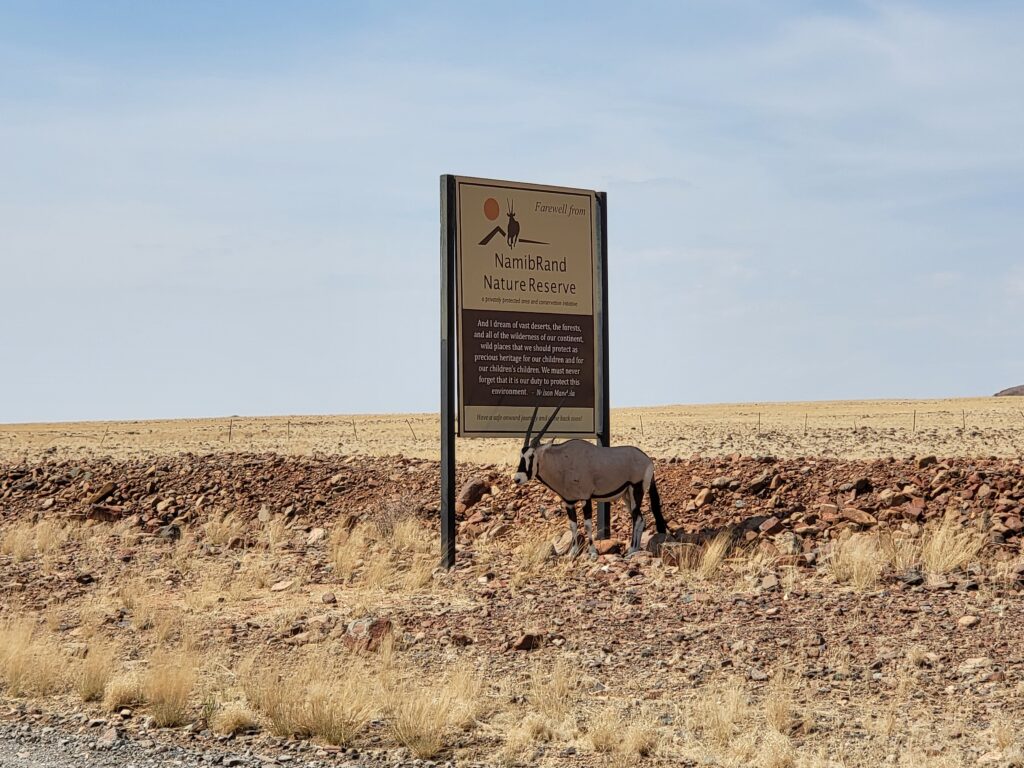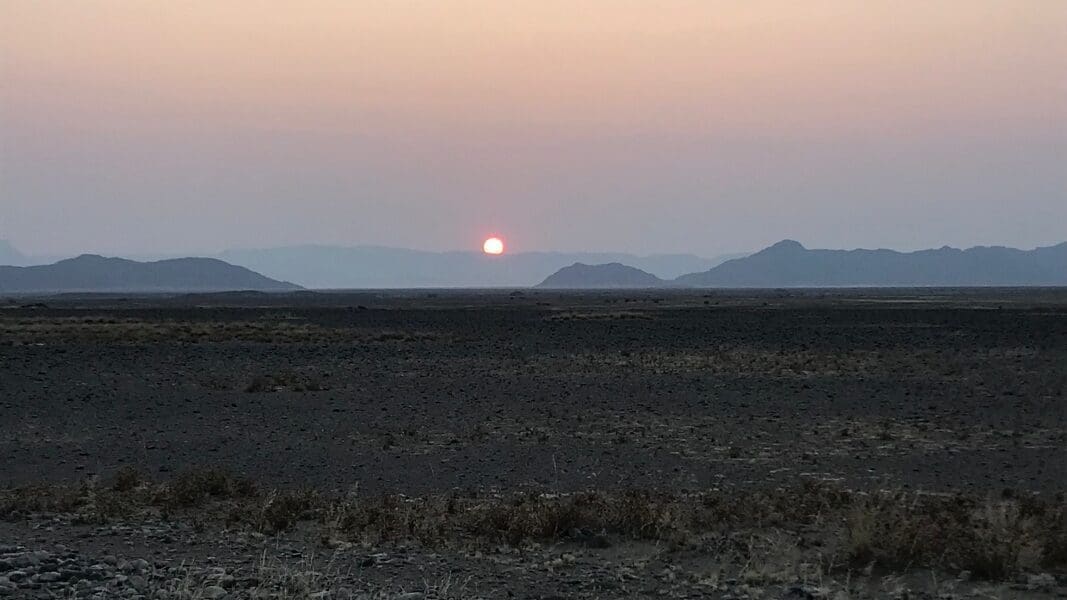The Namib Naukluft Park: A Jewel in Namibia’s Crown
Nestled within Namibia’s vast landscapes, the Namib Naukluft Park is an awe-inspiring expanse where arid deserts meet rugged mountains. This park, one of the largest in Africa, offers more than just striking beauty; it’s a remarkable example of how nature thrives in extreme environments and a beacon for conservation in the modern world. Here, we’ll explore the park’s history, its stunning natural features, rich wildlife, conservation efforts, and the profound impact it leaves on its visitors.
A History of Preservation
The history of Namib Naukluft Park reflects Namibia’s deep commitment to preserving its unique ecosystems. Established in 1979, this park encompasses approximately 49,768 square kilometers, making it one of the largest protected areas in Africa. Yet, the roots of its conservation efforts extend even further back. In 1907, the Namib Desert Reserve was created, marking the beginning of official conservation in the region. This reserve was the foundation of what would later expand into the Namib Naukluft Park, demonstrating a longstanding dedication to safeguarding Namibia’s natural treasures.
The park’s establishment as a protected area was a crucial step in preserving the delicate desert ecosystem and the unique species that inhabit it. The challenges posed by the harsh climate and scarce resources created an environment where only the most resilient species could survive. Today, Namib Naukluft Park serves as a sanctuary for these remarkable adaptations, attracting scientists and nature enthusiasts from around the world who are eager to study its biodiversity and geological features.
A Landscape of Contrast: Desert, Dunes, and Mountains
Namib Naukluft Park landscape is striking in its diversity, characterized by towering sand dunes, stark salt pans, and rugged mountains. This vast and varied terrain contributes to the park’s distinctive appeal and supports a surprising range of ecosystems.
- The Namib Desert: Endless Sands
The Namib Desert, one of the oldest deserts in the world, forms the heart of the park. It stretches along Namibia’s coastline and is home to some of the tallest dunes on Earth, reaching heights of over 300 meters. The golden sands shift with the wind, creating an ever-changing landscape that is both hypnotic and humbling. This desert landscape may appear barren at first glance, but it holds a wealth of life adapted to survive in one of the planet’s most inhospitable environments.
One of the most famous areas within the park is Sossusvlei, a large salt and clay pan surrounded by towering red dunes. Here, the iconic contrast between the white pan, red sand, and bright blue sky creates a striking visual effect. Nearby, Deadvlei offers an even more surreal sight with its petrified trees standing like sculptures on the cracked, white clay. Deadvlei’s stark beauty has made it a popular destination for photographers, capturing the ancient dead trees silhouetted against the sand and sky. This area is a reminder of the power of nature’s elements to shape landscapes and challenge our perceptions of life and resilience.
- Dune 45: A Photographer’s Dream
Rising majestically from the desert floor, Dune 45 is one of the most photographed dunes in the park. Standing at about 85 meters, it offers a challenging yet rewarding climb for those willing to scale its slopes. Adventurers and photographers flock to Dune 45, especially at sunrise, to capture the moment when the first light of day paints the dunes in hues of gold and orange. The panoramic view from the top showcases the seemingly endless dunes stretching across the horizon, a sight that leaves an indelible impression on all who witness it.
- Naukluft Mountains: A Rugged Wilderness
In contrast to the expansive sand dunes, the Naukluft Mountains offer a rocky, rugged terrain that provides a unique setting for exploration. These mountains are crisscrossed with hiking trails that lead through steep canyons, lush riverbeds, and hidden waterfalls. The trails offer hikers a different perspective on the park, revealing unexpected bursts of greenery amidst the arid landscape. The Namib Naukluft Park Mountains are also home to an array of plant and animal species that have adapted to the mountainous environment, making it a fascinating area for both adventure seekers and nature enthusiasts.

Wildlife in the Desert: A Lesson in Adaptation
While deserts are often associated with desolation, Namib Naukluft Park is a surprising haven for a wide variety of wildlife that has adapted to survive in such extreme conditions. The park’s inhabitants are a testament to nature’s resilience and its ability to find balance in the harshest of climates.
Desert-Adapted Mammals
Among the most notable species are the oryx, springbok, and Hartmann’s mountain zebra. These mammals have evolved various physiological adaptations to conserve water and tolerate the intense desert heat. For example, the oryx can raise its body temperature to prevent water loss through sweating, while the springbok relies on its ability to extract water from the vegetation it consumes.
Birds and Reptiles: Masters of the Sky and Sand
The park is also home to numerous bird species, including the endemic Rüppell’s korhaan and the striking ostrich. The extreme temperatures of the desert may seem hostile, yet many bird species thrive here, relying on their ability to fly long distances in search of food and water. Meanwhile, various reptiles such as the Namaqua chameleon and sand geckos display remarkable adaptations that allow them to move across the hot sand or burrow beneath it for protection from the sun.
Conservation Efforts: Protecting a Fragile Ecosystem
As a beacon of conservation, Namib Naukluft Park is actively involved in initiatives to protect its delicate ecosystems. The park’s management is dedicated to ensuring that its landscapes and wildlife are preserved for future generations, despite the pressures of tourism and climate change.
Monitoring and Preservation
The park’s conservation efforts include regular monitoring of wildlife populations to assess their health and numbers. This monitoring is crucial in tracking the success of conservation programs and detecting any threats to the survival of the species that inhabit the park. In addition to wildlife monitoring, the park also focuses on combating poaching, especially of the endangered desert-adapted species. Rangers are trained to protect the park’s animals, particularly those that are at risk of extinction.
Sustainable Tourism Practices
Namib Naukluft Park also emphasizes sustainable tourism practices that minimize human impact on the environment. Visitor guidelines encourage responsible behavior, such as staying on designated trails, respecting wildlife, and adhering to waste disposal regulations. By promoting ecotourism, the park aims to generate income that can be reinvested into conservation while educating visitors about the importance of protecting Namibia’s natural heritage.
Community Engagement
The park works closely with local communities, involving them in conservation efforts and providing economic opportunities through tourism. This collaboration not only enhances the park’s conservation success but also fosters a sense of ownership and pride among local populations in preserving their natural environment.
The Namib Naukluft Park Experience
For those who venture into Namib Naukluft Park, the experience is more than just a trip to a scenic destination. It is a journey into a world that challenges our notions of life, beauty, and resilience. Walking across the dunes, exploring the mountains, or witnessing a desert sunrise, visitors are immersed in a landscape that is both timeless and humbling.
Namib Naukluft Park’s appeal lies in its ability to evoke a sense of wonder and respect for nature’s capacity to flourish under seemingly impossible conditions. As visitors explore the park, they become part of a larger narrative—one that celebrates the harmonious coexistence of conservation, exploration, and the raw beauty of the Namib Desert.
The Timeless Symphony of the Namib Desert
Namib Naukluft Park stands as a testament to the boundless beauty and resilience of nature. Its landscapes, from the iconic dunes of Sossusvlei to the rugged Naukluft Mountains, tell the story of adaptation and survival. The wildlife that calls this park home is a reminder of nature’s resourcefulness, while the conservation efforts reflect a commitment to preserving these wonders for future generations.
In the heart of Namibia, where the desert meets the sky, Namib Naukluft Park invites all who enter to experience the majesty of its landscapes and the delicate balance of its ecosystems. It is a timeless symphony, echoing through the ages, and a call to protect the fragile beauty of our natural world.
Thinking of visiting Namib-Naukluft Park? Explore a range of tours that showcase the incredible beauty of this desert landscape!
What is the best time to visit Namib Naukluft Park?
The ideal time to visit Namib-Naukluft Park is during the cooler, dry months between May and September. During this period, temperatures are more comfortable for exploring, and wildlife is often more active. However, sunrise and sunset light during these months also offers spectacular photography opportunities, especially on the dunes of Sossusvlei and Deadvlei.
What should I bring for a visit to Namib Naukluft Park?
Visitors should bring essentials for the desert environment: ample water, sunscreen, a hat, and lightweight, breathable clothing. For overnight stays, extra layers are advised as temperatures can drop significantly at night. Additionally, a good camera, binoculars, and sturdy hiking boots are useful for those planning to hike in the Naukluft Mountains or explore dunes like Dune 45.
Can I visit Namib Naukluft Park without a guide?
Yes, many areas of Namib-Naukluft Park, including Sossusvlei and Dune 45, can be accessed independently with a 4×4 vehicle. However, certain trails, such as those in the Naukluft Mountains, can be challenging, so joining a guided tour is recommended for first-time visitors who want to learn more about the region’s history, wildlife, and geology. Guides can also enhance safety and ensure a more comprehensive experience.
Are there accommodations available within Namib Naukluft Park?
Yes, there are several accommodation options within and near Namib-Naukluft Park, ranging from basic campsites to luxury lodges. Sesriem, the gateway to Sossusvlei, offers various camping sites and lodges, which are ideal for those planning to see the dunes at sunrise. Advance booking is recommended, especially during peak travel seasons from May to September.


You must be logged in to post a comment.